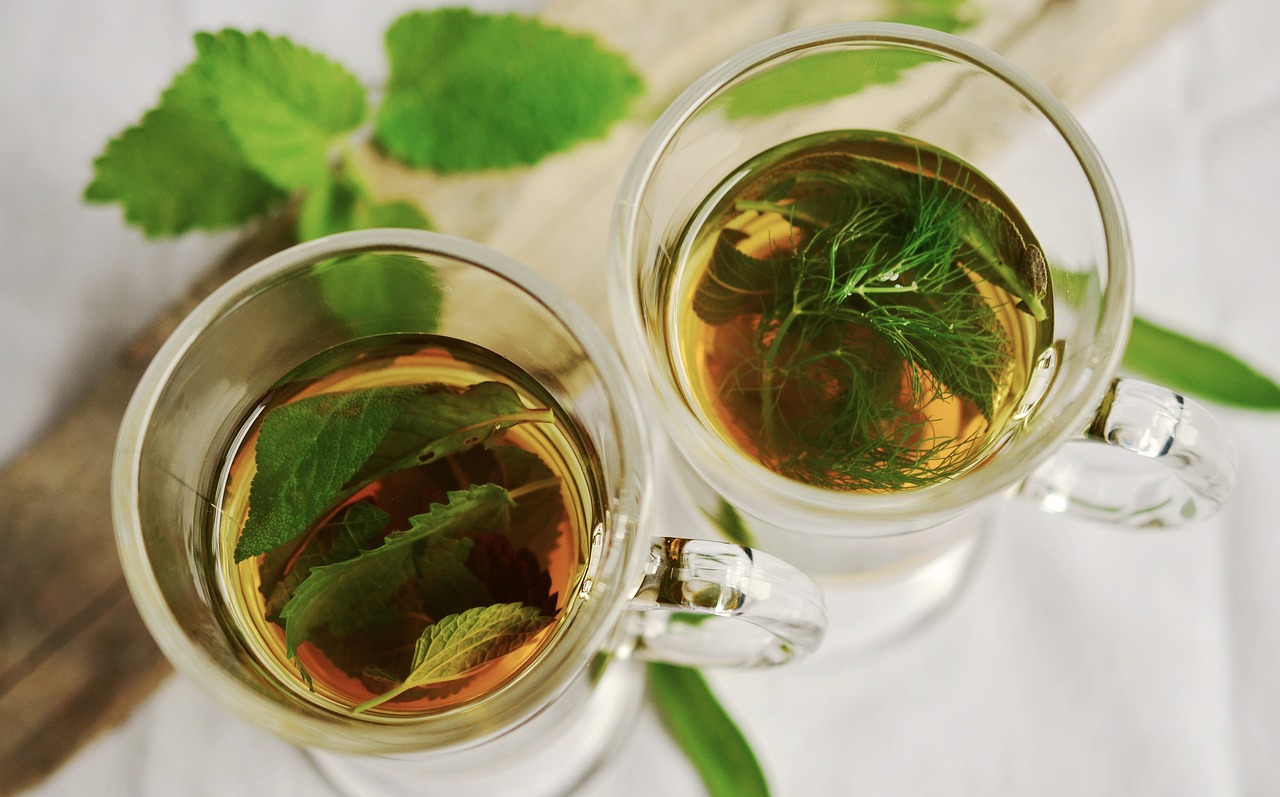Have you ever wondered how to make homemade herbal tea? Many of us enjoy herbal tea’s soothing and therapeutic qualities, but few realize how simple and rewarding it can be to create these blends in the comfort of our homes.
This guide will walk you through an easy, step-by-step process to make your herbal tea concoctions. Not only can brewing your own herbal tea be a cost-effective and versatile practice, but it also allows you to fully control the ingredients and flavors, ensuring they are perfectly suited to your taste and health preferences.
Whether you’re a seasoned tea connoisseur or an eager novice, this guide will offer valuable insights into the art of homemade herbal tea, making your tea time more personal, enjoyable, and therapeutic.
The Benefits of Herbal Tea
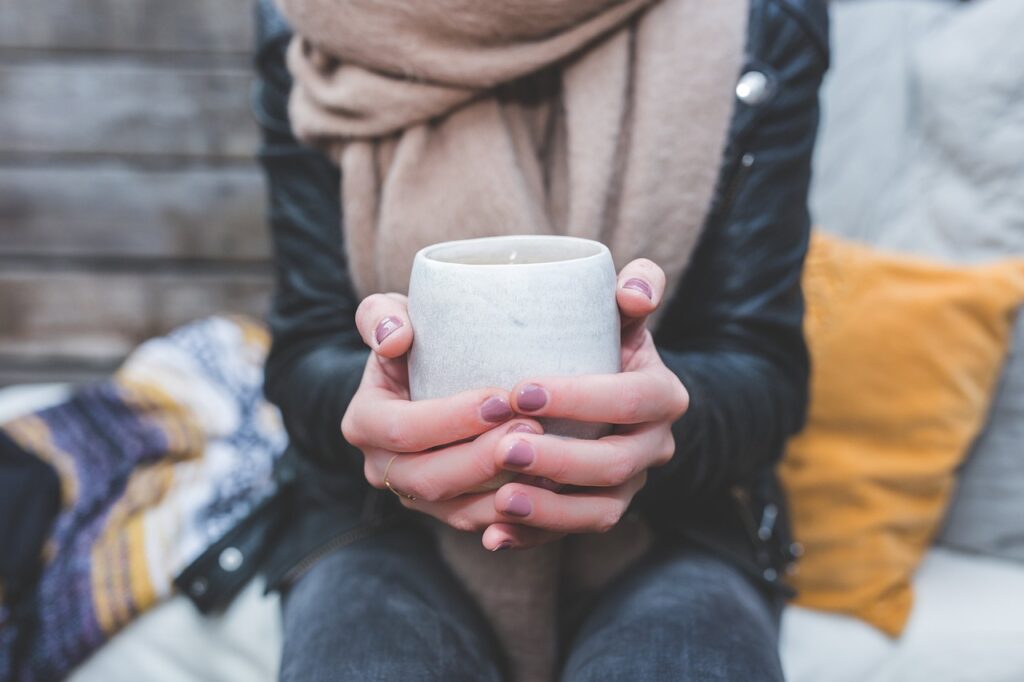
Herbal tea does more than just soothe your senses and please your palate. This humble brew carries a multitude of health benefits that you may not be aware of:
🍵 Promotes Good Sleep
Herbal teas, especially those made with chamomile or valerian, have been known to promote better sleep. They contain natural elements that help to relax the body and mind, leading to sounder, more restful slumber.
🍵 Boosts Immunity
Certain herbal teas like elderberry or echinacea are packed with antioxidants and vitamins that can strengthen your immune system, helping to ward off common colds and other infections.
🍵 Helps with Digestion
Herbal teas such as peppermint and ginger have properties that aid digestion and alleviate stomach discomfort. These teas can help to soothe an upset stomach, reduce bloating, and even relieve nausea.
🍵 Supports Heart Health
Some herbal teas, like hibiscus and green tea, can help reduce blood pressure and cholesterol levels, contributing to overall heart health.
🍵 Aids in Weight Loss
Certain teas like green tea and oolong have been shown to promote weight loss by boosting metabolism and fat oxidation.
🍵 Enhances Mood
Drinking herbal tea has been associated with improved mental clarity, reduced stress and anxiety, and enhanced mood. This is due to the antioxidative qualities of many herbs and their natural calming effects.
Remember, while these benefits sound fantastic, it’s always important to consult with a healthcare professional before incorporating any new herbal remedies into your routine, especially if you have pre-existing conditions or are taking other medications.
Assembling Your Ingredients
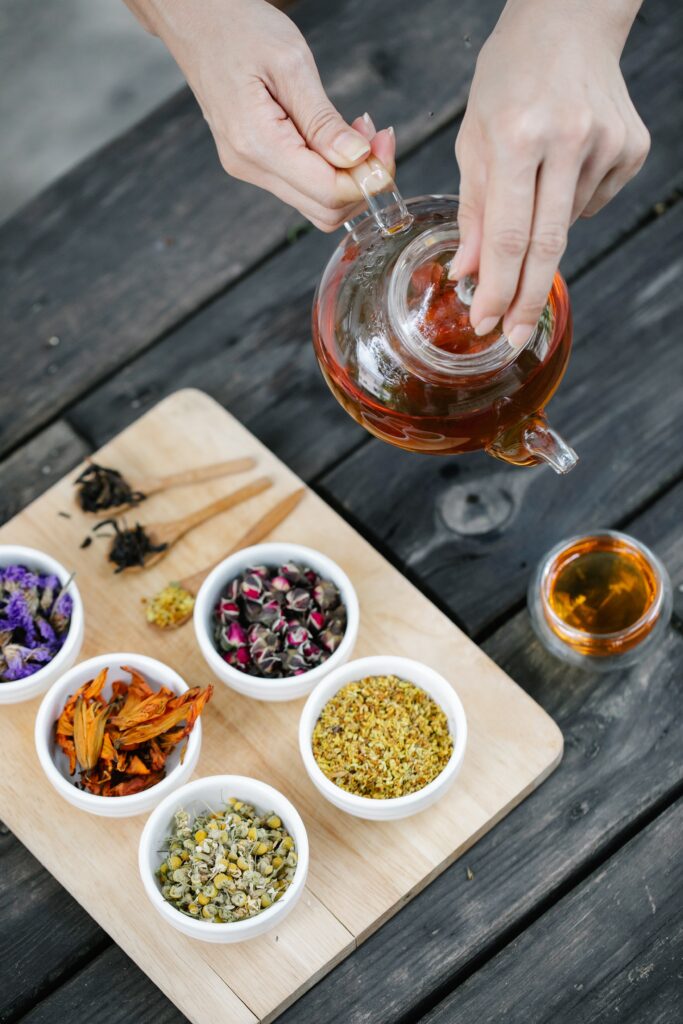
To embark on your homemade herbal tea journey, you’ll need to gather a few key ingredients and tools. As always, the star of the show is the herbs. Opt for fresh or dried herbs depending on your preference and availability. From chamomile and peppermint to hibiscus and lavender, the choice is all yours. You could even consider growing your herbs for a truly homegrown experience!
Next on the list is water. It’s crucial to use high-quality, filtered water as it forms the majority of your tea and can significantly influence the taste.
Choosing the right sweetener is another important aspect. Some may prefer the natural sweetness of certain herbs, while others might want to add honey, agave syrup, or stevia for an extra hint of sweetness. Remember, the key is enhancing the flavors, not overpowering them.
Now, let’s talk about tools. You’ll need a kettle or a pot to boil the water, a teapot or a French press for steeping, and a strainer to separate the leaves from your brewed tea. A teacup or a mug is, of course, essential to enjoy your carefully crafted brew.
Step-By-Step Guide to Making Herbal Tea
Here’s a straightforward, step-by-step process to help you create your very own cup of herbal bliss at home:
① Boil the Water
The first step in making herbal tea involves boiling your water. The general recommendation is to use one cup of water per serving. For a stronger concentration, you may consider decreasing the water amount.
② Prepare Your Herbs
While your water is heating, this is the perfect time to prepare your herbs. If you’re using fresh herbs, ensure they are thoroughly washed and lightly crushed to unleash their aromatic flavors. For dried herbs, a typical guideline is to use 1-2 teaspoons per cup of water. Feel free to adjust this quantity according to your taste preference.
③ Steep the Herbs
Once your water has reached a boil, it’s time to steep your herbs. Pour the hot water over your herbs, cover, and let sit (steep) for about 5-15 minutes. The steeping time will depend on the type of herb you’re using and how strong you want your tea. Remember, the longer you steep, the stronger the flavor.
④ Strain and Sweeten
After your tea has steeped, strain the mixture to remove the herbs, making sure you capture all the liquid. At this stage, you can add your desired sweetener if you wish. Stir well to ensure it’s fully dissolved.
⑤ Serve
Your homemade herbal tea is ready to serve! Enjoy it hot, or allow it to cool and serve over ice for a refreshing iced herbal tea.
Remember, the beauty of homemade herbal tea lies in its flexibility. Feel free to experiment with various herbs or even combine different herbs to create your unique tea blend.
Herbal Homemade Tea Recipes
If you’re curious to explore the flavor profiles of different herbs, here are a few easy recipes that you can start with:
🫖 Herbal Chai Tea
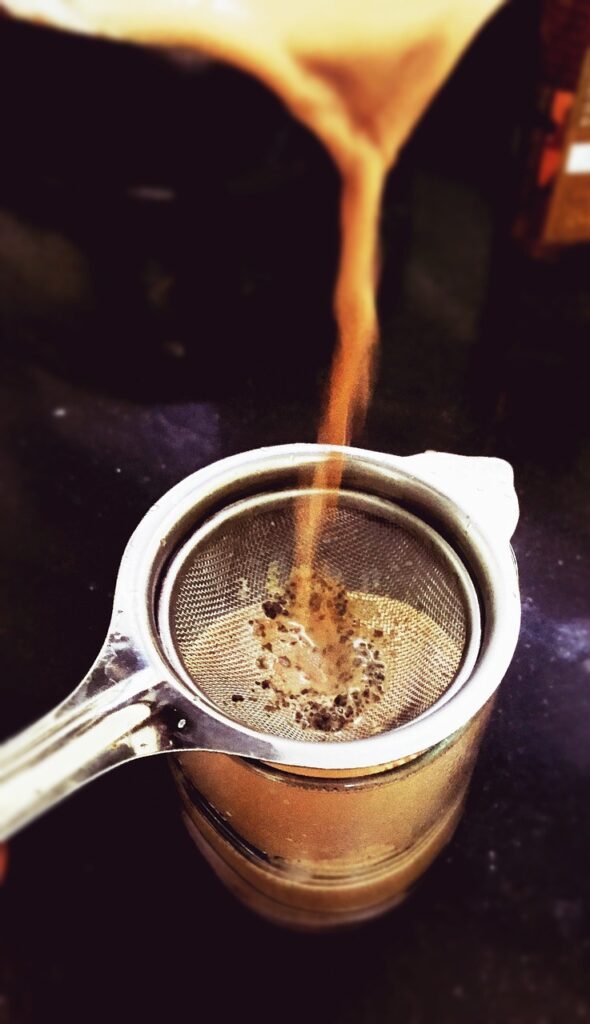
Chai is a flavorful blend of tea, spices, and herbs hailing from India. This Herbal Chai Tea recipe offers a caffeine-free alternative with an aromatic, warming blend of spices that can be enjoyed at any time of the day.
Ingredients:
- 1 cinnamon stick
- 4 cardamom pods
- 4 cloves
- 1 star anise
- 1-inch piece of fresh ginger, sliced
- 2 cups of water
- 2 teaspoons rooibos tea or another herbal tea of choice
- Honey or sweetener of choice to taste
- Milk or non-dairy milk substitute to taste
Steps:
- Begin by lightly crushing the cinnamon, cardamom, cloves, and star anise using a mortar and pestle. This will help to release their flavors.
- In a pot, add the crushed spices, sliced ginger, and water. Bring to a boil.
- Once boiling, reduce heat to low and let the mixture simmer for about 10-15 minutes.
- After 15 minutes, add the rooibos tea to the pot. Let it steep for another 5 minutes.
- Strain the tea into cups. Add honey or your preferred sweetener to taste and milk if desired.
- Serve your Herbal Chai Tea hot and enjoy the warming, aromatic blend.
You can also watch this video tutorial on how to make Chai Tea at home.
🫖 Lemon and Elderflower Tea
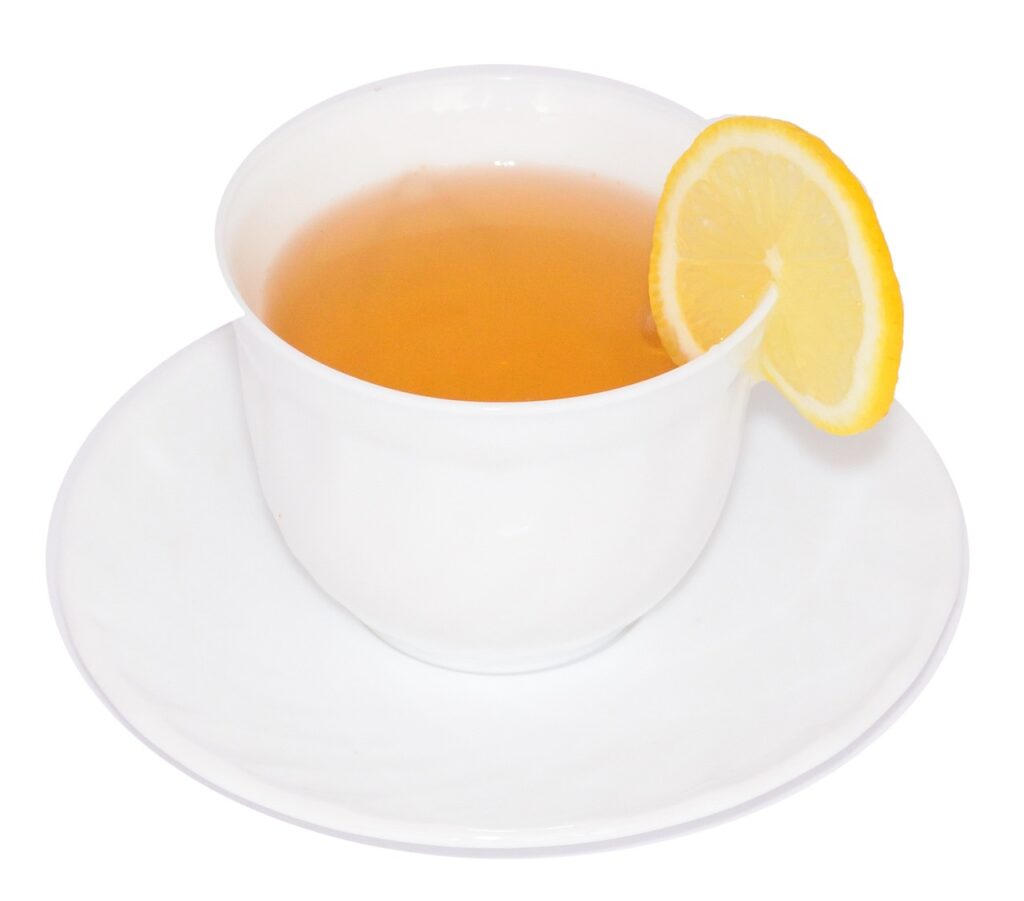
Lemon and Elderflower Tea is a refreshing herbal infusion that’s perfect for a soothing mid-day break or a revitalizing start to your morning. The vibrant tartness of lemon pairs exceptionally well with the subtly sweet, floral notes of elderflower, delivering a delightful sensory experience.
Ingredients:
- 2 teaspoons dried elderflowers
- 2 teaspoons dried lemon balm
- 1 teaspoon dried lemon peel
- 1 teaspoon dried lemongrass
- 2 cups of water
- Honey, or sweetener of choice, to taste
Steps:
- Combine all the dried herbs (elderflowers, lemon balm, lemon peel, and lemongrass) in a tea infuser or directly in your teapot.
- Boil water in a kettle or pot. Once boiling, pour the hot water over your herb mix.
- Cover the teapot and steep the herbs for 10-15 minutes. Steeping time can be adjusted based on your preference for strength and flavor.
- After the designated steeping time, strain the tea into your cup to remove all the herbs. You should be left with a clear, aromatic herbal infusion.
- At this stage, sweeten your tea if desired. Stir thoroughly to make sure your sweetener is fully dissolved.
- Serve your Lemon and Elderflower Tea hot, and enjoy the invigorating floral and citrus flavors.
🫖 Ginger Tea
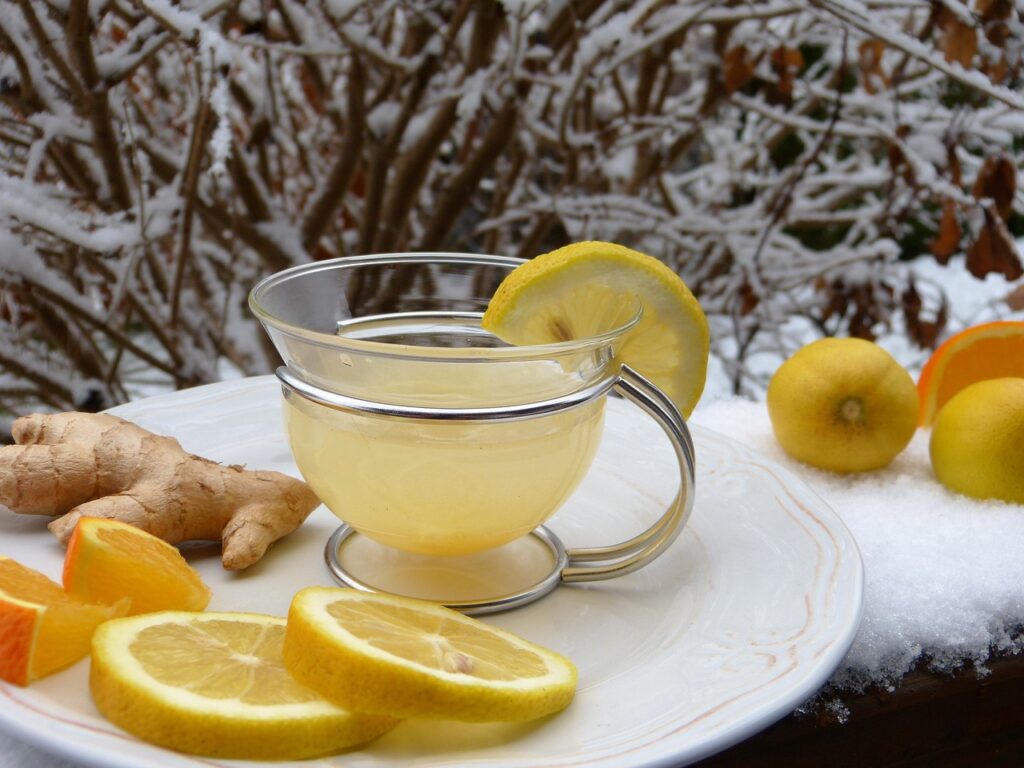
Ginger Tea is a timeless classic known for its invigorating heat and health benefits, such as aiding digestion and alleviating nausea. Simple to make, this potent brew will warm you up from the inside and can be enjoyed at any time of the day.
Ingredients:
- 1-inch piece of fresh ginger peeled and thinly sliced
- 2 cups of water
- Honey or sweetener of choice to taste
- Lemon slice, for garnish (optional)
Steps:
- Start by preparing your fresh ginger. After peeling, slice it thinly to maximize the surface area for extraction.
- In a pot, combine the ginger slices and water. Bring the mixture to a boil.
- Once boiling, reduce the heat to low and let the ginger steep for about 10-15 minutes. The longer you steep, the stronger and spicier your tea will become.
- After steeping, strain the tea into your cup to remove the ginger slices. Ensure you capture all the potent, spicy liquid.
- Sweeten your tea with honey or your preferred sweetener, if desired. Stir well until the sweetener is fully dissolved.
- Optionally, garnish your Ginger Tea with a slice of lemon for a tangy twist.
- Serve your Ginger Tea hot, and relish the fiery, refreshing flavor.
🫖 Hibiscus-Cinnamon Tea
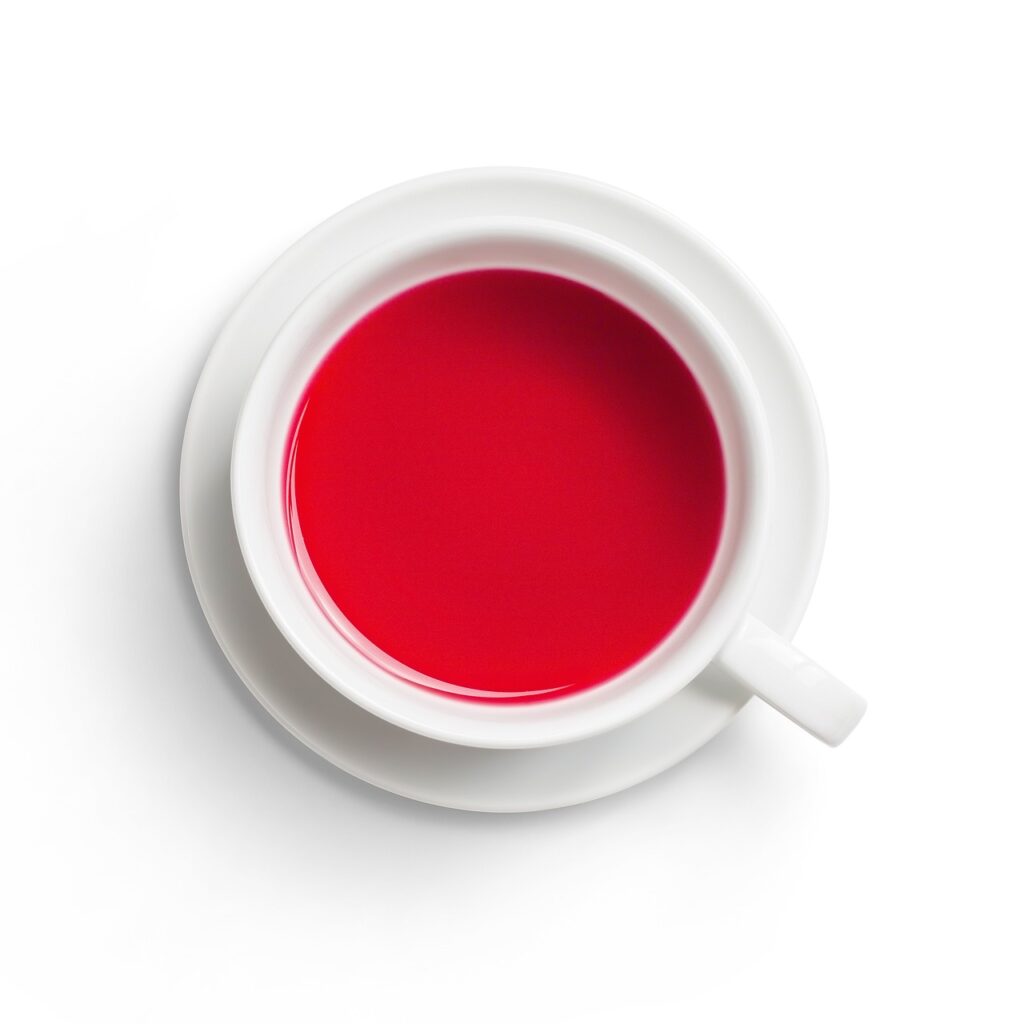
Hibiscus-Cinnamon Tea is a vibrant, tangy, and subtly sweet infusion that not only pleases the palate but also offers a wealth of health benefits. Known for its deep red color, hibiscus tea is rich in antioxidants and vitamin C, while cinnamon adds a sweet and spicy depth to the flavor profile. Together, they create a delightful and healthy tea that can be enjoyed hot or cold.
Ingredients:
- 2 teaspoons dried hibiscus flowers
- 1 cinnamon stick
- 2 cups of water
- Honey or sweetener of choice to taste
Steps:
- Combine the dried hibiscus flowers and cinnamon stick in a tea infuser or directly in a teapot.
- Bring water to a boil in a pot or kettle. Once boiling, pour the hot water over the hibiscus and cinnamon.
- Cover the teapot and allow the mixture to steep for about 15-20 minutes. The resulting infusion will have a vibrant red color and a tart flavor.
- After steeping, strain the tea into your cup, ensuring you’ve captured all the liquid. The remaining hibiscus flowers and cinnamon sticks can be discarded.
- If desired, sweeten your tea with honey or your preferred sweetener. Stir until it’s completely dissolved.
- Serve your Hibiscus-Cinnamon Tea hot for a cozy, heart-warming drink, or allow it to cool and enjoy it over ice for a refreshing beverage.
Storing Your Herbal Tea
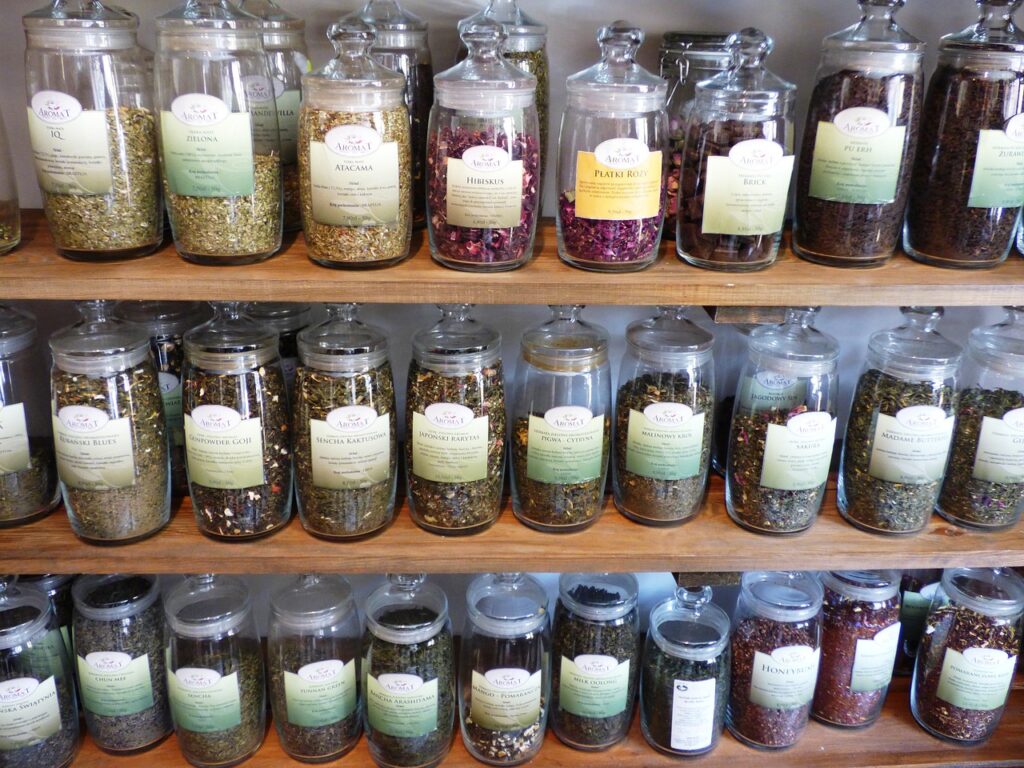
Proper storage of your homemade herbal tea is crucial to maintaining its freshness, aroma, and potency. Here are some tips and tricks to ensure your tea stays as fresh as the day you made it:
✅ Airtight Containers
Store your dried herbs and homemade herbal tea blends in airtight containers. This prevents exposure to air, which can lead to loss of flavor and potency. A glass jar with tight-fitting lids work well and help you easily identify your stored tea.
✅ Avoid Heat and Light
Exposure to heat and light can degrade your tea over time. Keep your herbal tea in a cool, dark place like a pantry or cupboard.
✅ Steer Clear of Moisture
Moisture is a huge no-no when it comes to storing tea because it can lead to mold and loss of flavor. Ensure your herbs are thoroughly dried before storing them, and always keep your storage area dry.
✅ Label Your Containers
It’s easy to forget which tea is which, especially if you have a large collection. Always label your containers with the type of tea and the date it was made or bought. This will help you keep track of your stock and ensure you’re using the freshest tea.
✅ Use Within a Year
While dried herbs can last for years, aim to use your homemade herbal tea within a year for the best flavor and potency.
Savoring Your Herbal Tea
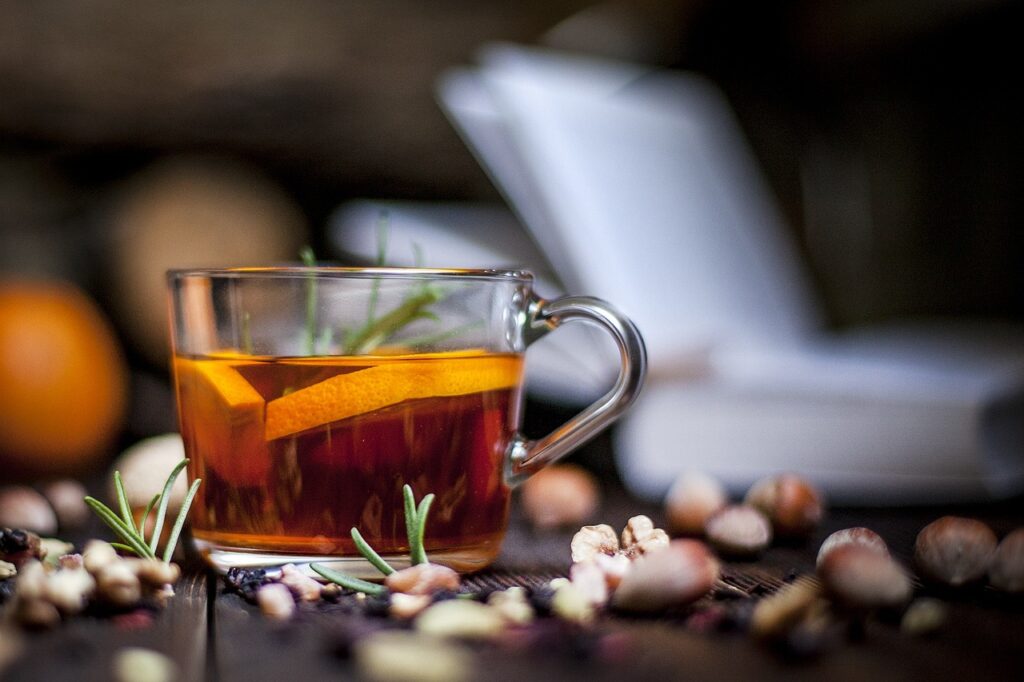
The art of savoring your homemade herbal tea goes beyond just brewing and drinking. Here are some tips to help you fully appreciate the tea experience:
🌿 Optimal Brewing Time and Temperature
Each herb has its own optimal brewing time and water temperature best to extract its flavors, aromas, and beneficial properties. Most herbs brew well in near-boiling water (around 200°F) and a steeping time of 5 to 15 minutes. However, more delicate herbs like chamomile and lavender may require slightly cooler water (around 180°F) and shorter steeping times (around 5 minutes) to prevent bitterness.
🌿 Tea Pairings
Pairing your herbal tea with the right foods can enhance both the flavors of your tea and your food. Light, floral teas like chamomile or lavender pair well with sweet pastries or desserts. Bold, tangy teas like hibiscus or mint can stand up to spicy or savory foods. Experiment with different combinations to find your perfect match.
🌿 Mindful Drinking
Take the time to savor your herbal tea truly. Notice the color of the tea, the aroma of the brewed herbs, and of course, the taste. Does it have floral notes? Citrusy undertones? Earthy flavors? Drinking tea mindfully can help you appreciate its complexity and nuances, turning a simple cup of tea into a moment of calm and relaxation.
Remember, the beauty of homemade herbal tea is the ability to customize it to your liking. Feel free to experiment with different herbs, brewing times, and pairings to create your perfect tea experience.
Frequently Asked Questions
Q: Can I use tea bags instead of loose tea leaves for homemade herbal tea?
Yes, tea bags can be used instead of loose tea leaves when making homemade herbal tea. However, loose tea leaves often provide a fresher, more robust flavor. If convenience is a priority, go ahead and use tea bags. But if you’re after a more nuanced flavor profile, loose tea leaves are the way to go.
Q: How does homemade herbal black tea compare to store-bought versions?
Homemade herbal black tea often has a richer, fuller flavor compared to store-bought versions. This is because you can control the freshness and quantity of the ingredients. Homemade teas allow you to personalize your blend, combining black tea with other herbs such as tulsi or mint leaves, to cater to your taste preference.
Q: Can raspberry leaf or ginger root be used in homemade herbal tea?
Absolutely! Raspberry leaf and ginger root can both be excellent additions to homemade herbal tea. Raspberry leaf imparts a flavor similar to traditional black tea and is renowned for its health benefits, particularly for women. Ginger root, on the other hand, adds a warming, spicy kick to your brew and is known for its digestive benefits.
Q: How can I make a soothing herbal tea with chamomile flowers?
Chamomile flowers are perfect for calming herbal tea. Simply place two teaspoons of dried chamomile flowers in a tea ball, pour over hot water, and let steep for around 5 minutes. The resulting infusion is light, floral, and especially soothing before bed.
Q: What is the best way to use mint leaves in homemade tea?
Mint leaves can be used fresh or dried in homemade tea. For a refreshing mint tea, simply steep a handful of fresh mint leaves in hot water for 10 minutes, then strain. If you’re using dried mint, reduce the quantity to 1-2 teaspoons. The unique cooling effect of mint makes it a great addition to your herbal tea collection.
Final Words
Making your own herbal tea at home is not only a rewarding process, but it’s also an opportunity to tailor your brew to your specific tastes and health needs. Whether you’re a fan of the floral notes of chamomile, the fiery punch of ginger, or the refreshing cool of mint, the possibilities are endless. Plus, there’s something uniquely satisfying about sipping on a beverage crafted with your hands.
So why not take a leap? Who knows, you might find yourself discovering new flavors you never thought you’d enjoy. So here’s my advice: put on the kettle, dive into the world of herbs, and start your homemade herbal tea adventure today. Trust me, your taste buds will thank you!

